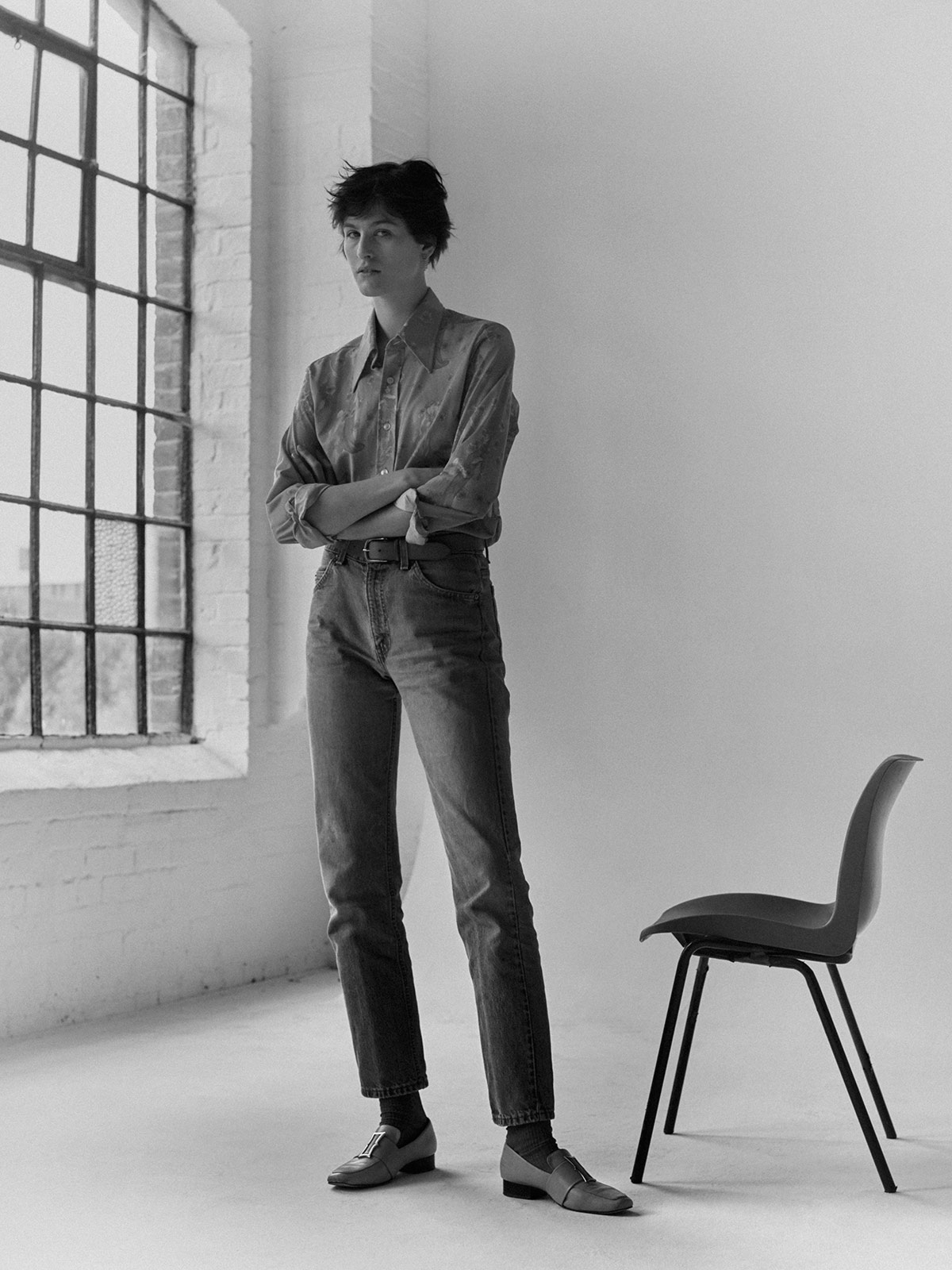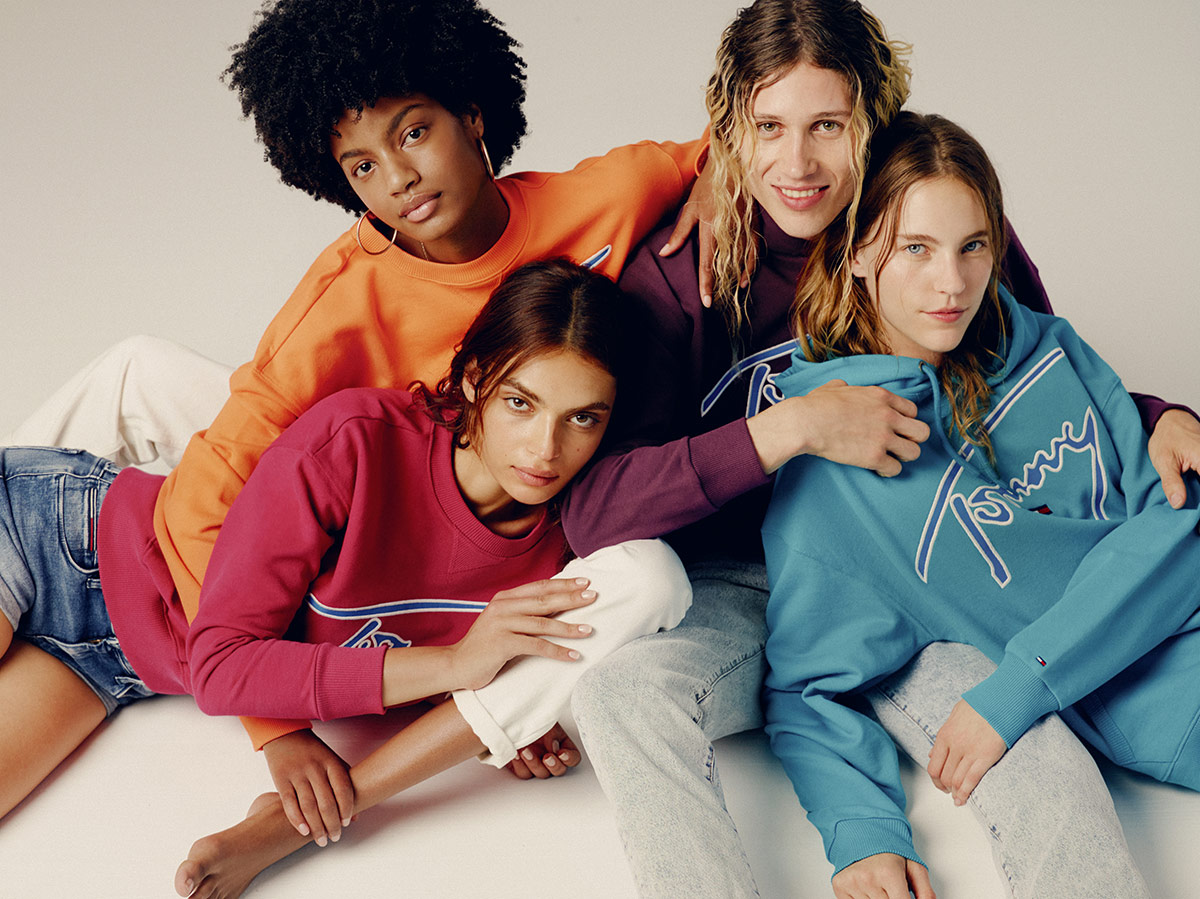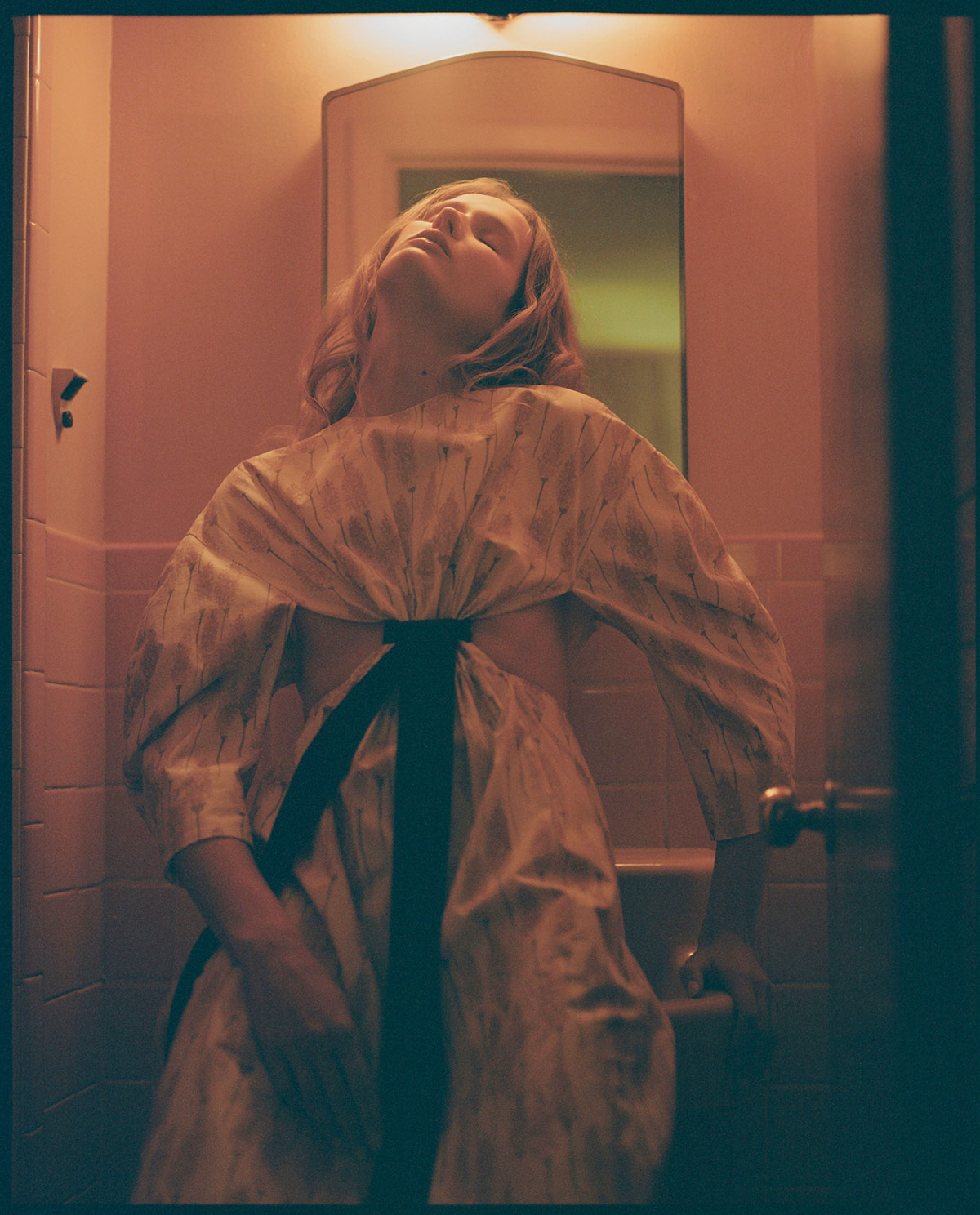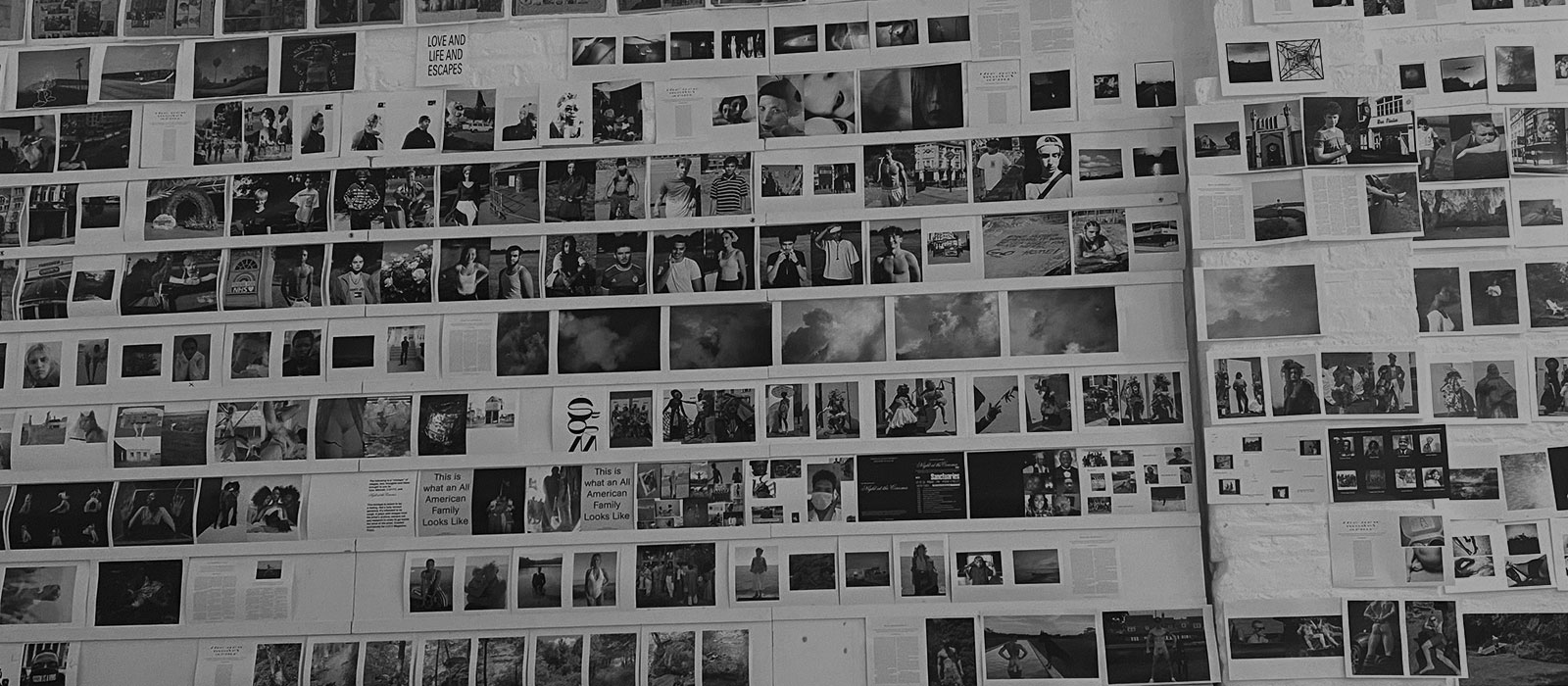
Katie GrandInterviewed Pierre A. M’Pele
London, UK. August 29, 2020
It’s a little strange that whom I often refer to as the grande dame of styling is now my boss, although I don’t think she considers herself a boss. What’s certain is that Katie Grand is a creative leader. Her capacity to uplift fashion houses and magazines is unmatched. From her work with legendary designers such as Miuccia Prada and Marc Jacobs to supporting young talents, she has left an artistic imprint on a series of exciting projects for about two decades. In the past few months, the whole fashion world was shaken. There has been an urge to evolve while dealing with a global pandemic – it’s no secret KG and members of the LOVE team were personally affected by COVID-19. But it’s truly in the darkest, strangest, most uncertain times that progress happens. And it did.
The first thing I noticed about Katie is her resilience, and her insane work ethic. She’s constantly on the hamster wheel, and ever more so when she could barely breathe. She’s also incredibly intuitive. Katie senses weather changes before a storm is detected, that’s her talent. She knows in which direction the wind will blow – or maybe she just follows her instincts? A gut feeling impossible to control, but who’s proven to be trustworthy over the years. She’s an experienced Dorothy, making the right decision whenever a fork in a path appears. In the past though, she will admit it, she’s not made the right decisions, and she’s not done enough to make sure inclusivity was one of the core values of her operations. So, what convinced me to join her team is her recognizing our industry’s flaws and her will to challenge the status quo. The latest issue of LOVE is doing just that. It’s a labor of love, built by a tiny team in difficult times. Flick through it and dare say it does not smell change.
Pierre A. M’Pelé: Katie, let’s talk about the covers first and what they mean and why we made those choices and how difficult it was. They are all very personal and they all mean different things to you. So, let’s talk a little bit about these covers.
Katie Grand: I’m going to start by being quite honest. Now that the issue’s out, it’s been phenomenally well received — the best issue of any magazine I’ve ever done in 26 years. So, it’s very easy to have hindsight and say, “Oh, it was great and this is so brilliant.” And, it’s very easy to feel hugely inspired by the reactions that we’ve had to this issue… but to just go back a minute — we didn’t know that this would be well-received. I think I’d been very used to working with my peers and having a very tight group around me. We were very used to creating together. I think when you are in that moment and when you’re on trips together and you’re doing commercial work together, it’s very easy to start talking to those people about the next issue. But, once Covid happened and travels stopped, we physically couldn’t get in a room together anymore. This actually challenged a lot — who to work with and the reasons to work with.
You can read comments on Instagram or you can choose not to. I chose to. And as a result, as I said in my editor’s letter, I felt awful. I felt very uncomfortable with some of the things that people said about me. You can easily go into a hole and just go, “It’s not happening,” or try to do something about it. I phoned a bunch of people I’ve never talked to and when we started this issue, I was talking to Steven Klein and David Sims and Mario Sorrenti and Francesca Sorrenti, and Alasdair McLellan, particularly about their work.
I’ve sort of started this very romantic dialogue about the photographers and their works and I looked back on Steven Shaw’s and Joel Meyerowitz’s work, and then Nan Goldin’s work.
So, my favorite photographers kept kind of coming back to me, which also shaped another part of this issue. We were having this very romantic conversation about the idea of magazines and what’s being lost and the idea of photography and what’s being lost. And now, even on editorial projects, you’d get video, the BTS (behind-the-scenes), the BTS of the video, someone in the wardrobe room captured capturing BTS of BTS — and that was all completely normal, just normal stuff. So, it was this idea of going back to being the solo artist.
And, it was David Sims who said to me one night “You know, I really feel like I’m a solo artist guy” and he triggered something interesting.
So did Steven Klein, who was experimenting with shooting over WhatsApp and FaceTime, and he started talking about his work in a more personal way. These are people that I’ve worked with for 25 years now, off and on. I’d got into all these very personal beliefs with these photographers and then I was challenged about my choices and how I have worked with mainly caucasian photographers… “Okay, let’s address this.” So, I started calling a bunch of people that I have worked with at Marc Jacobs, particularly with Jamal and Donavon, who’ve also worked with me at Marc. It kind of evolved into bigger conversations with complete strangers. And, everyone was just really enthusiastic and it’s been a massive personal journey, this issue. And, working with all these brilliant artists and just having the time to talk to people properly and the luxury of being able to give them the space — give anyone space — that they wanted to. For instance, when Alasdair’s pictures came in at 74 pages long, I was just like, “Well, I don’t want to edit this.”
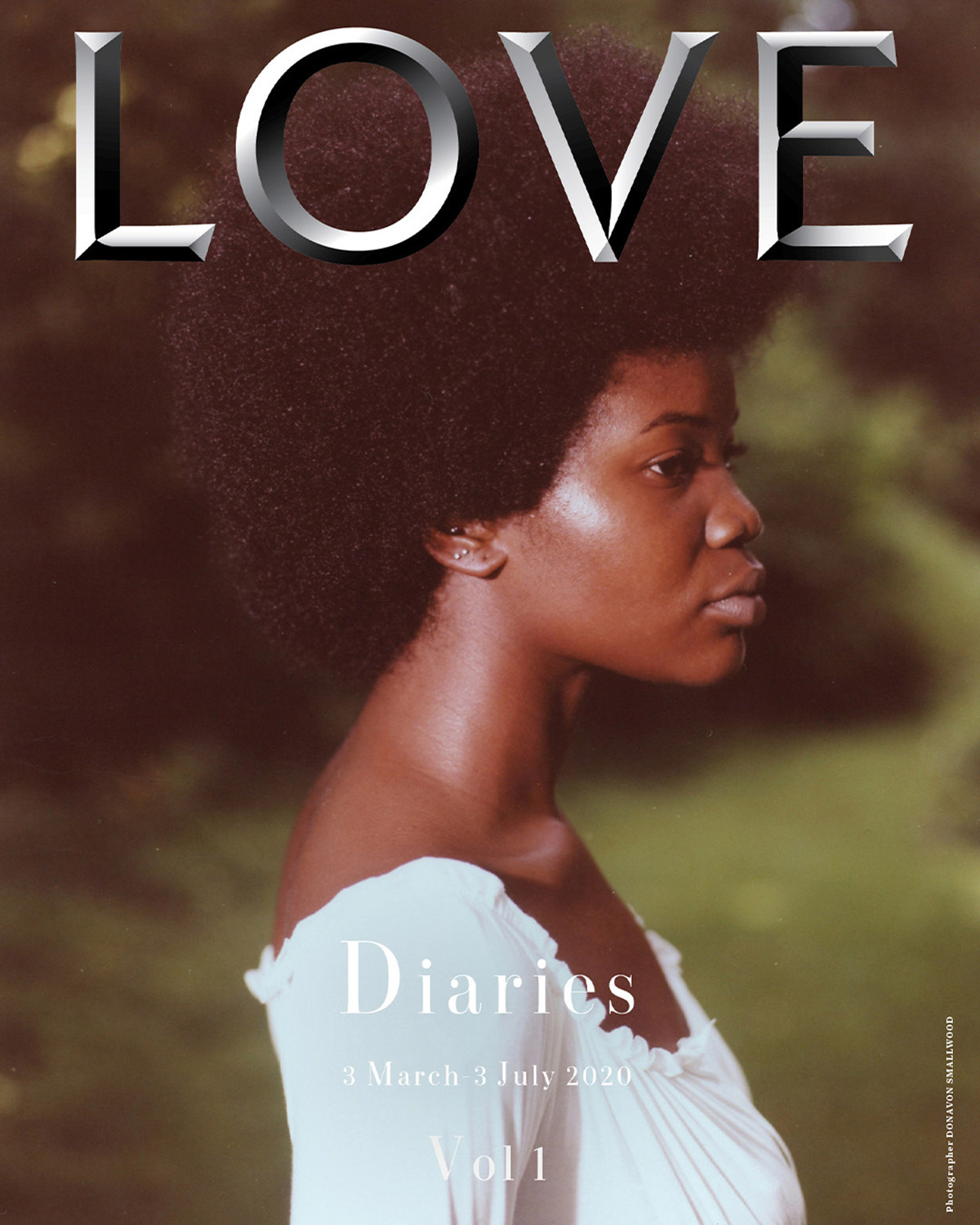
Then my publisher Katharine sat on the other side of the desk and said, “I’m not going to make you edit this,” and we found a way to print two volumes and 600 pages. It’s kind of hard talking about this issue because it was so emotional. So, I’m really grateful that it’s been received well, especially since there were only five people doing this… there was no one else. Every day was like phone call after the phone call and talking about how to give people space and respect and — there are no short answers on this issue.
Pierre: There’s this saying that I’ve noticed on Instagram and on other social media platforms. People say, “Read the room,” which is what you did. I feel like many people in positions of power don’t look at the comments and they ignore what’s happening within their own social media space and you didn’t just diversify the pool of talent, but you also went for younger talent, people like Ib and Campbell. I feel like you can see that in the two volumes that we’ve put together, because it’s very in sync. Everything blends well together somehow. And so, how and why do you think we were able to produce these two volumes with so much, in terms of topics and in terms of style, and still make it work?
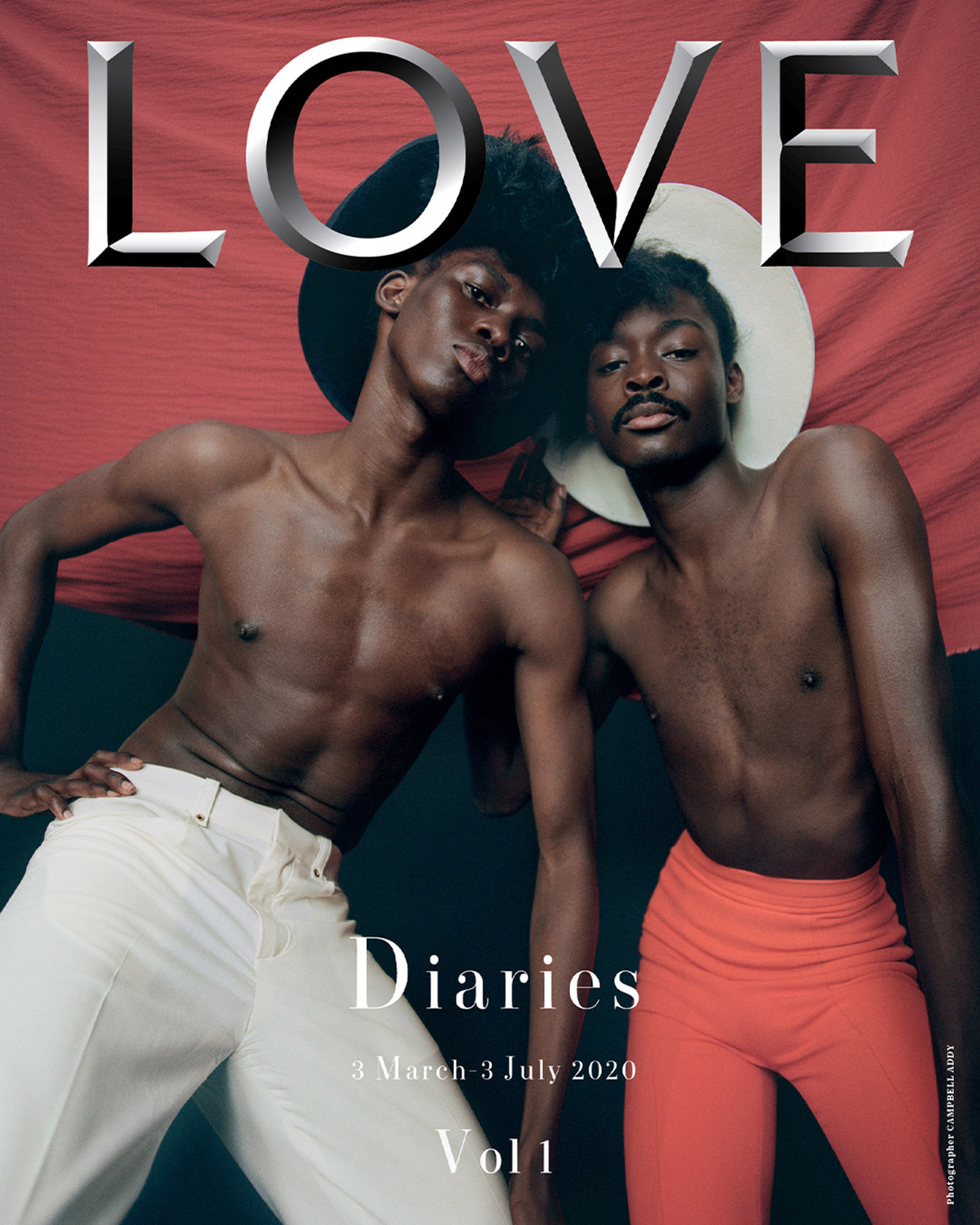
Katie Grand: I’m very sentimental, actually. I hold onto people and friends and most of my team that I’ve worked with for over 20 years. There’s definitely a pool of people that I’m kind of glued to. I’m very sentimental about my time at Dazed. And again, it’s so easy to see it in hindsight. But, you know, during that time at Dazed, I had the privilege to work with Francesca Sorrenti and also, Davide Sorrenti. And then, we always thought that Mario would never work with us because he was too famous and he got a famous girlfriend. In the early days at Dazed, we would always just avoid anyone famous because we’d just be like “Oh, they don’t want to work for us.”
When I started pulling a list of photographers together, the idea of using archival images came to me. I just got something in my head about republishing some of David’s pictures. I’d also been involved with the screening of from the scene of See Know Evil documentary by Charlie Curran — which is one of the best photography documentaries I’ve ever seen. When Francesca and I spoke for maybe two hours, she sent some ideas of pictures and we kind of went back and forth. I think when you look at pictures of New York, there is like a definite break of when it looked cool and when it stopped looking cool. But weirdly, David’s pictures don’t have that, they are a timeless sort of thing.
I hate the word “timeless.” I think when you’re a young person and you photograph your friends, there’s something hugely charming about that, but as an older person, you can never just capture that youth because it’s weird. You know, you get to a certain age and it’s weird.
So, David’s pictures were kind of in the loop. And then, I’d been talking to Indigo Lewin. I just thought Indie’s work’s got that thing that David’s work had. Not that they are similar photographers, but just that same youthful exuberance, innocence. Something that you’ll never get back again. So, there were these tangents that were kind of coming through with the commissioning, which was with this very kind of youthful passion, I suppose. You know, it’s just that innocence and that truth. It was kind of important to get that across.
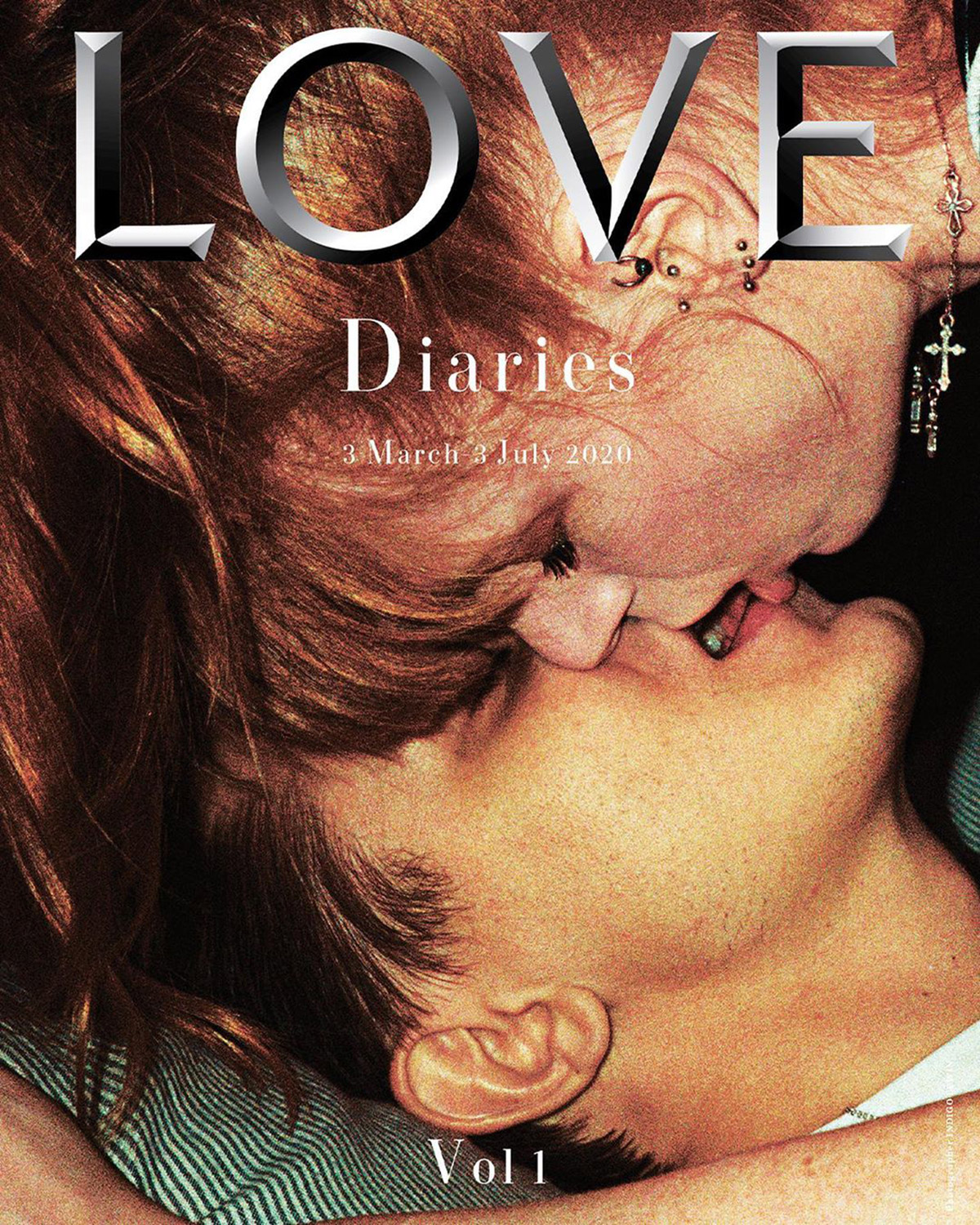
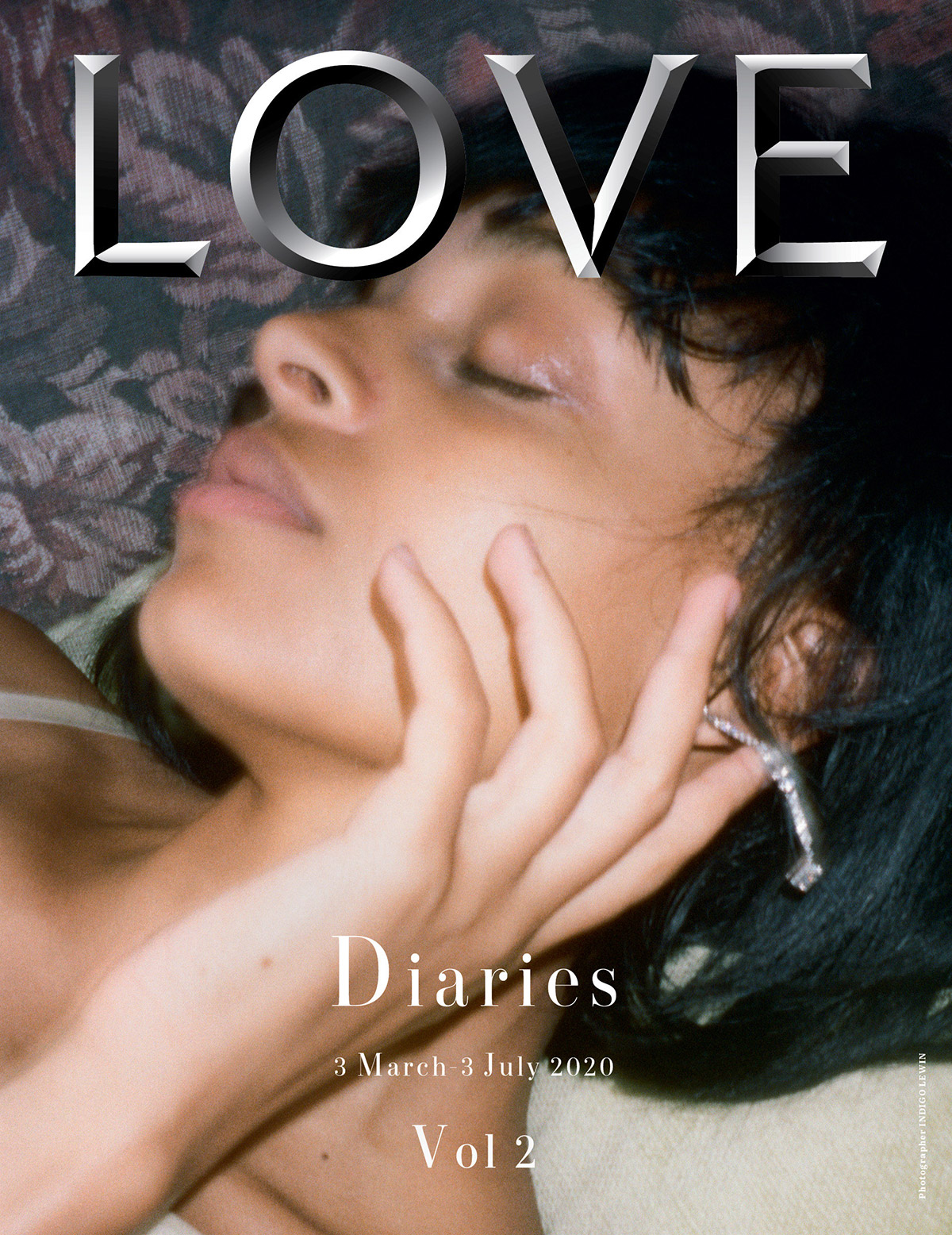
I think Kai’s cover image had that as well and Kai is a young guy and he can take those pictures of kids protesting and, you know, everyone’s in it together, so that’s what’s going on in the issue as well.
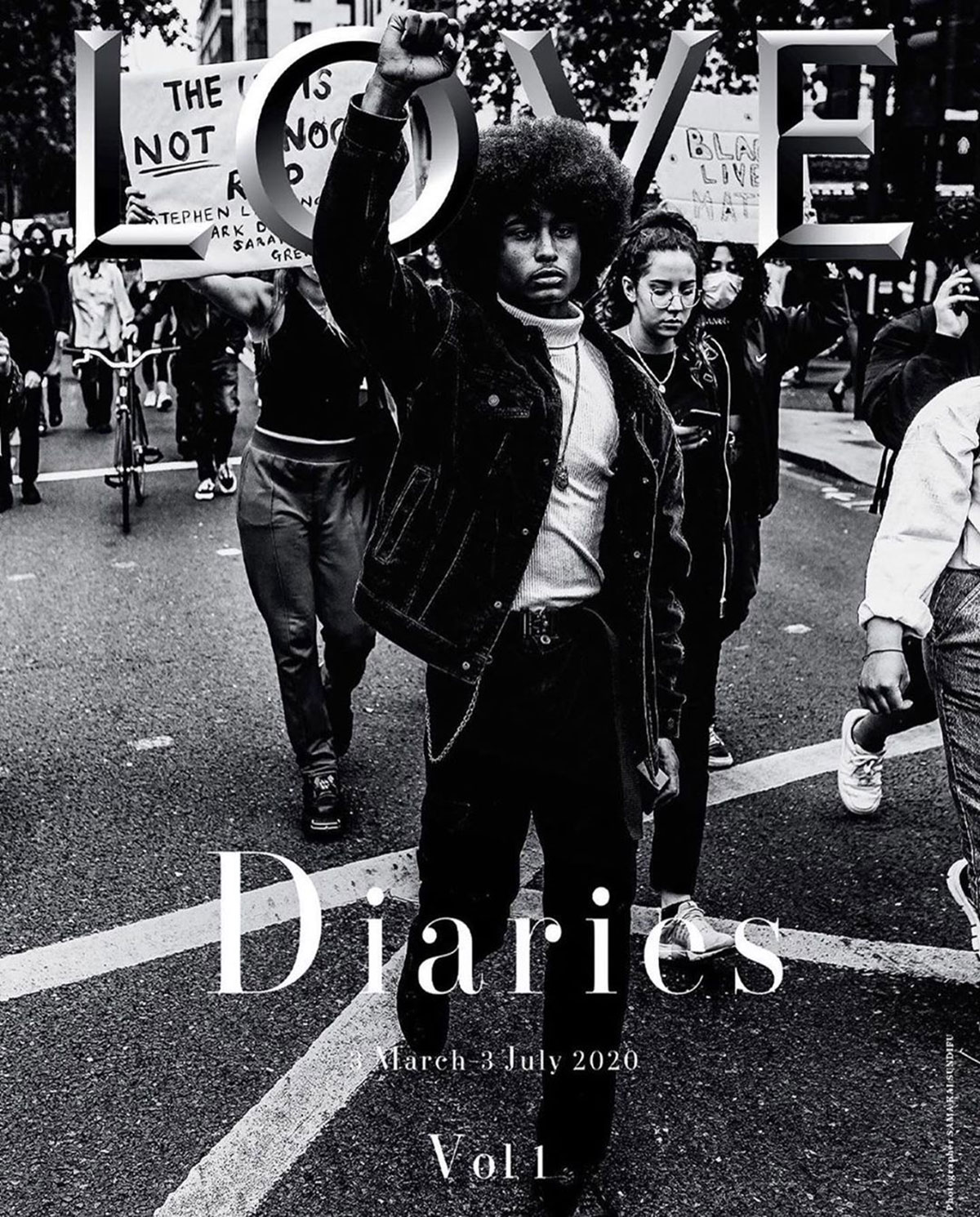
Pierre: What’s interesting about this issue is that there isn’t that much fashion. And, that’s what we said — this is not a fashion magazine. Why do you think people now are seeking or are interested in fashion magazines that aren’t deliberately about full-on fashion, the full-on glam?
Katie Grand: Well, I think people are. And, we all had that conversation about how we felt about Rasharn’s cover because it’s such a fashion picture. I’ll just get back a bit — I think it was probably around April or early May, and there was an article in Women’s Wear about all the graduate shows being canceled and what we’re all going to do. That was before you came on board fully, and I started talking to a friend Fran [Burns] and also Ib [Kamara] about how I felt it was important to support young designers and graduates and this idea that people could bring their collections in. And, this idea of supporting young talent was evolving as well.
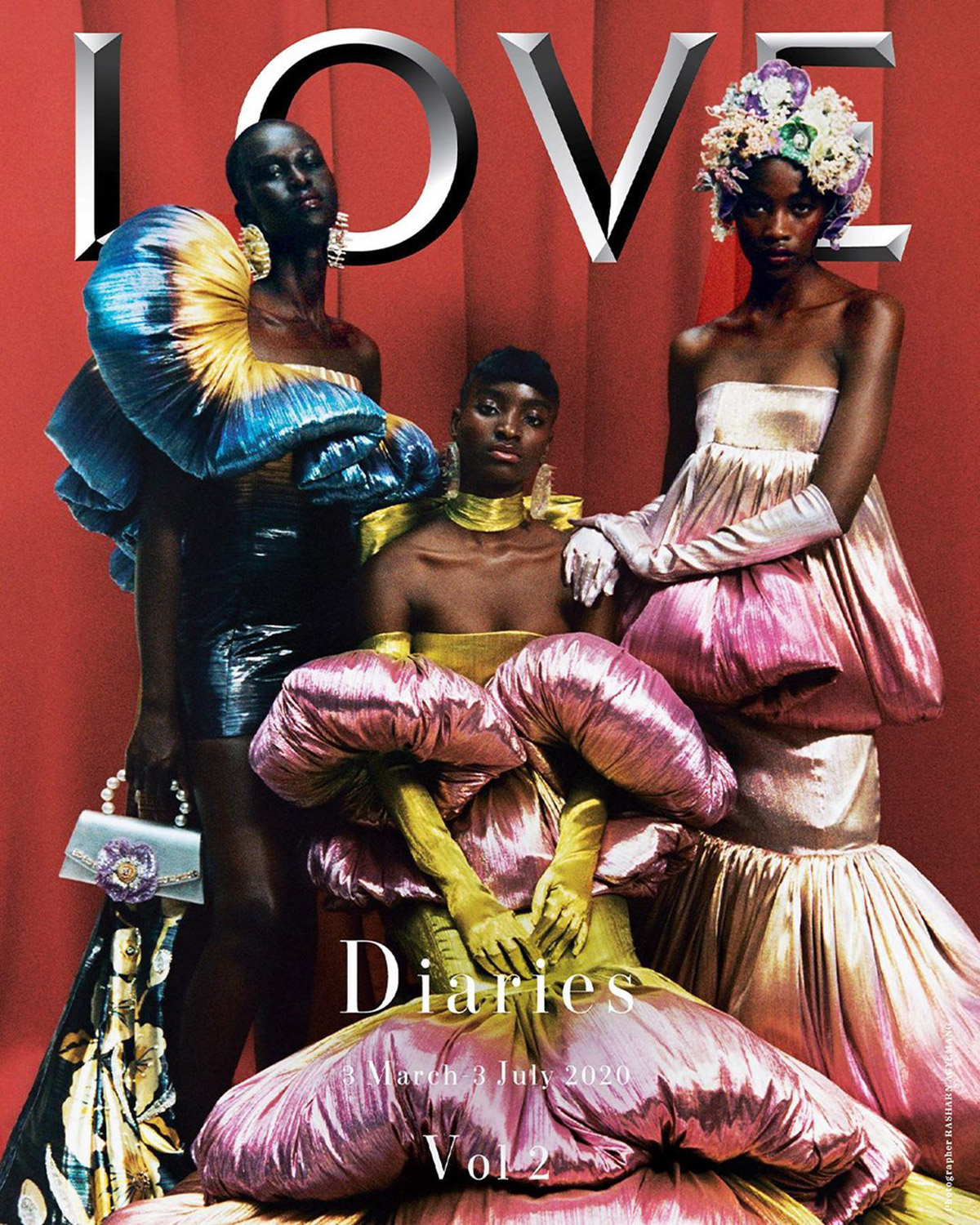
I think when we started this issue and even when you came in, it was still like, “Does it feel right to have a fashion picture right now?” Tim Walker and Ib shot during the first week after the lockdown ended and they were shooting outside of our office. It’s just so nice to see all these clothes and these kids in their eye makeup and it was just so nice to see that. During the seven weeks of real lockdown, there was something jarring about documenting fashion. As time went on, this kind of excitement reemerged about documenting fashion. It was just like, “Can’t talk about fashion,” “Really want to talk about fashion,” “Don’t want to see a fashion picture,” “Really want to see a fashion picture.” You know, every day you’d wake up and feel different.
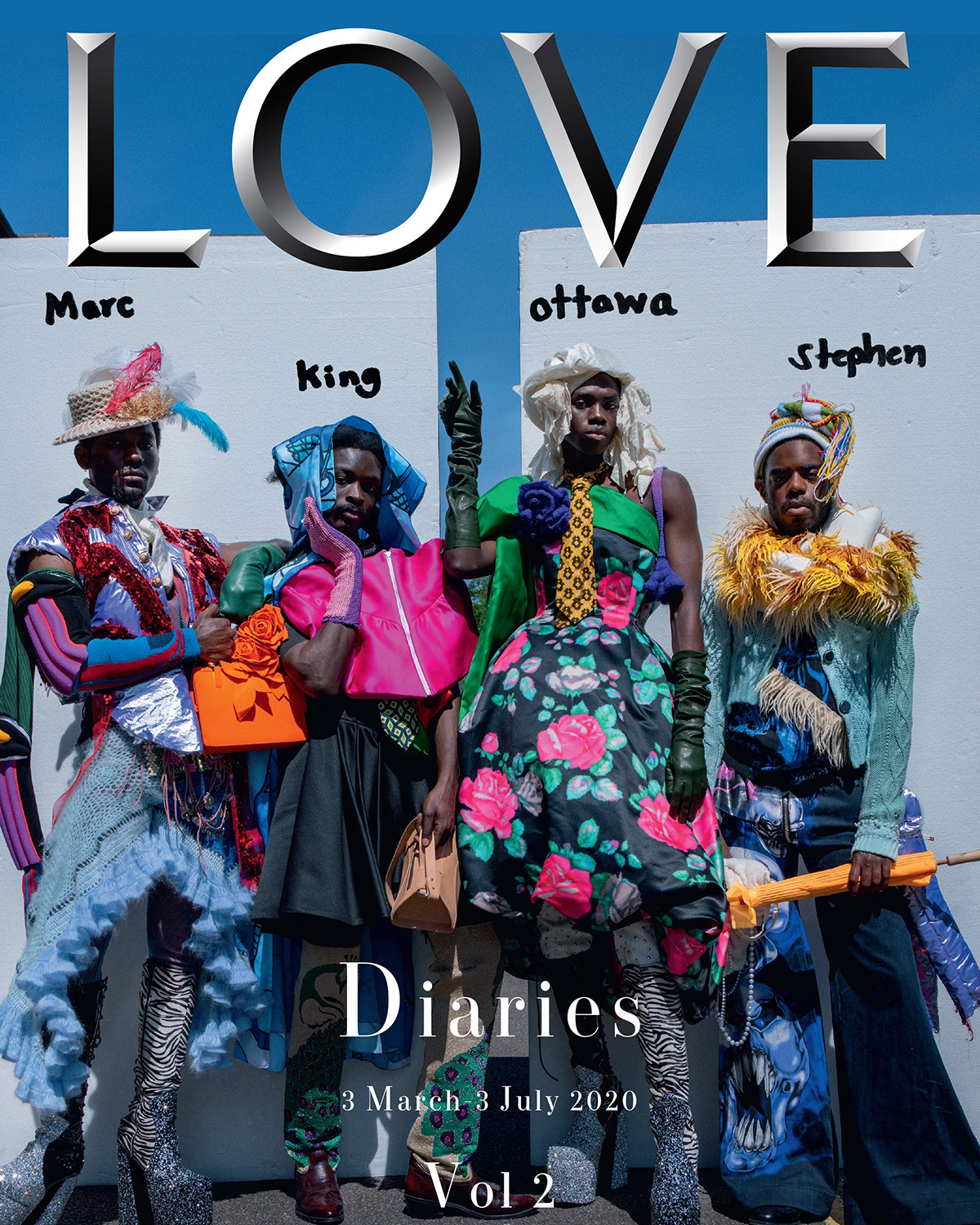
Pierre: And also, I feel like it was a different type of fashion picture. It felt very innocent. It wasn’t just a girl with an accessory having to show the bag because it’s a fashion credit. I think that’s what made it successful as well.
Do you think…it’s going to sound a bit cocky… but do you think that we’re setting the standard for how to approach fashion in the pages of a magazine? Is this something that’s triggered a new way of looking at fashion for you?
Katie Grand: I think what’s been really nice is that people have actually made the effort to buy the magazine or get hold of the magazine. I don’t know if it’s because it’s not just a fashion magazine or if it’s because it’s not being led by famous celebrity or models. I don’t know what it is in particular, but from the feedback I’ve heard, it’s captured a mood.
Pierre: I’m getting emotional, like literally trying to contain myself, because just looking at this again and thinking about what it means for a lot of people, from my perspective, is that it means hope and it means… Okay, I’m going to calm down [takes a deep breath]. There’s no reason to cry.
I’m emotional because I received so many messages from so many young people and they’re all super-positive. It’s really done for me what fashion magazines should be able to do and give to people. For that alone, it’s why we’re probably talking about it for the fifth time. This is why we’ve had this tremendous response, because what was done was really about change. It goes back to what we were discussing about change being a mechanism and not just an aesthetic. We actively participated in change. You can feel that through the magazines and the volumes and I think that’s what people get.
Katie Grand: I think the other thing that we’ve not really talked about off-camera is that actually this was done by four journalists and I can put a bit of a journalist’s hat on when I want to, but it doesn’t come as easily to me as it does figuring out proportions with a shoe and a hat or whatever. I think definitely the editorial stance felt much more journalistic than fashion in its point of view. I think that was really important. I think the talking that we all did was definitely about journalism and documentary and maybe it was just, I don’t know, maybe the worlds just collided in the right time. It definitely felt like the right time to talk about politics and culture and what’s happening in the world rather than the February collections this time.
Pierre: Yes. There was no Fashion Week and people were not particularly interested in shooting fashion. When you look at the brands that we featured in the past, that aren’t in the issue, are you worried about their response?
Katie Grand: At the very beginning, back in March, there was a conversation about delaying the issue because when people weren’t working in the press offices during lockdown, you couldn’t get the designer collections. Once it stopped being a hindrance it was exciting.
I think with the timeline that we had, and with the decision to do a hardback issue, and then we put your manifesto in… there were all these production questions that added time. So, we had to go to print a bit earlier than normal. There were logistical obstacles. But, I’m a pretty positive person. I always look at the glass as half-full rather than empty so it was kind of like, let’s just make it work. I think there was such momentum with you and with Paul and Murray. I think that we were just in a snowball of, “Okay, let’s do this.” I’m not sure how the press offices will respond to this, but there was no choice.
Pierre: I guess my question is, do we need fashion credits to create a fashion magazine?
Katie Grand: I think what’s interesting is that it was put together at a time when all the shops were closed. So, that’s when I came up with this idea of doing digital films so we can support the brands when the clothes are going into the store. It just made much more sense. And, then of course, we did the call out to young directors. That felt like a right thing to do as well, because we worked with loads of young photographers on this issue. So, we worked with young directors on our social platforms.
Pierre: We have these four covers and wanted to have five more… and now they’re happening.
Katie Grand: There was a pivotal moment for me as we were going to print and we had that very, very emotional day when Amelia, Ben and I were in the office. We all became so emotionally involved with people’s stories. Everyone had a story in this issue. I think that goes back to the fact that there were journalists involved that mainly studied politics. It’s probably the first time in a long time when everyone could talk about their politics [in fashion magazine] without it being a bit weird.
We all sat in that meeting and we were all fighting for the people that we were emotionally invested in it. I knew Jahmad’s mom was very ill and Davey had been talking with Amelia and that story became important, and we really wanted him to have a cover. Just every person we worked with… we were all fighting for the covers. We just sat there on the sofa and I thought, “I don’t want to edit this. I just don’t want to edit this.” I mean, I’m very bad at editing as an adversary, anyhow. I’m always like “Oh, but that’s looks really nice.” And you know, we definitely surpassed ourselves this time. It was just, like, if we can get these covers, let’s get them. And then it speaks to the genius and will of Catherine Russell and Louise Lawson, who works in production to get it done. And they did it.
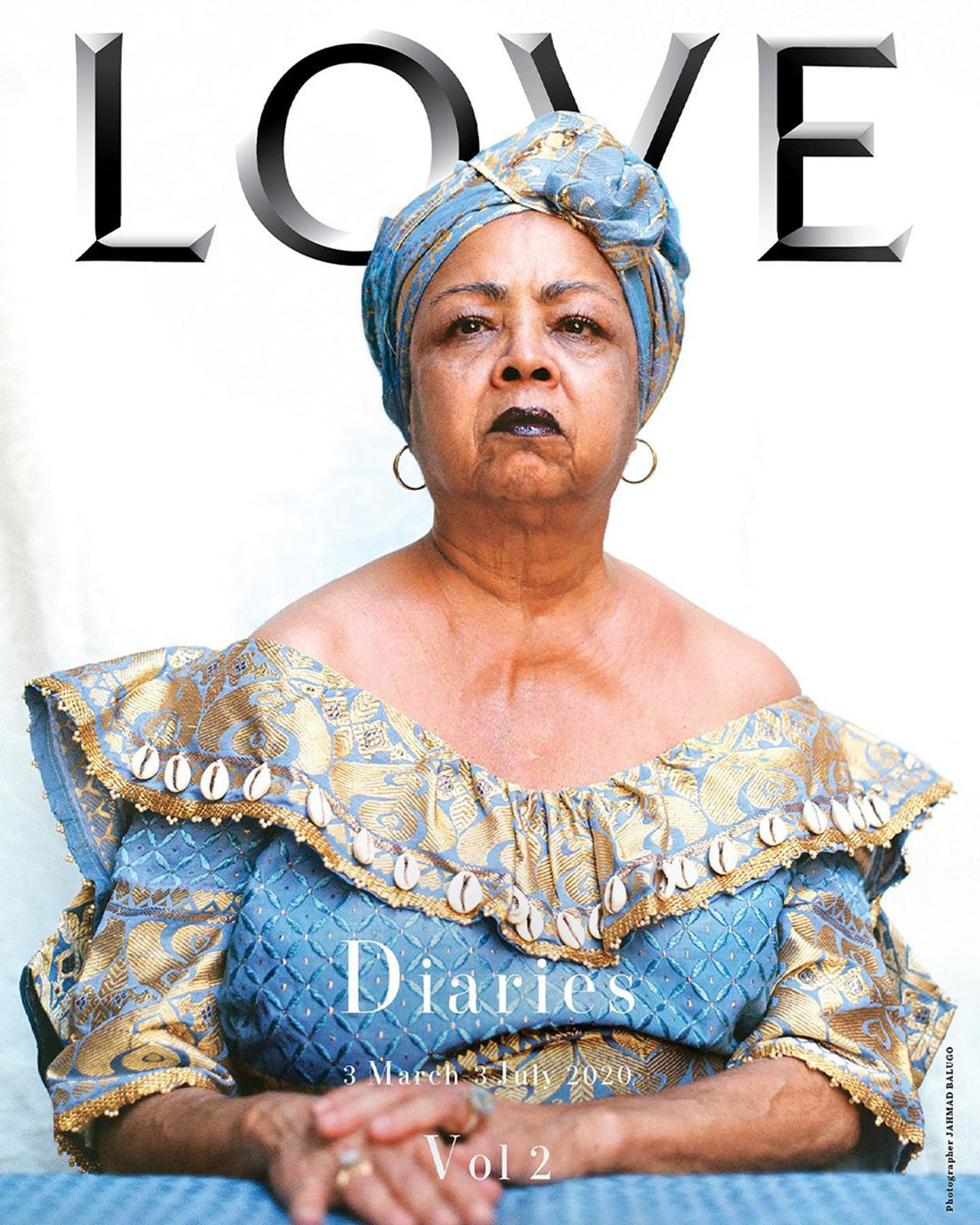
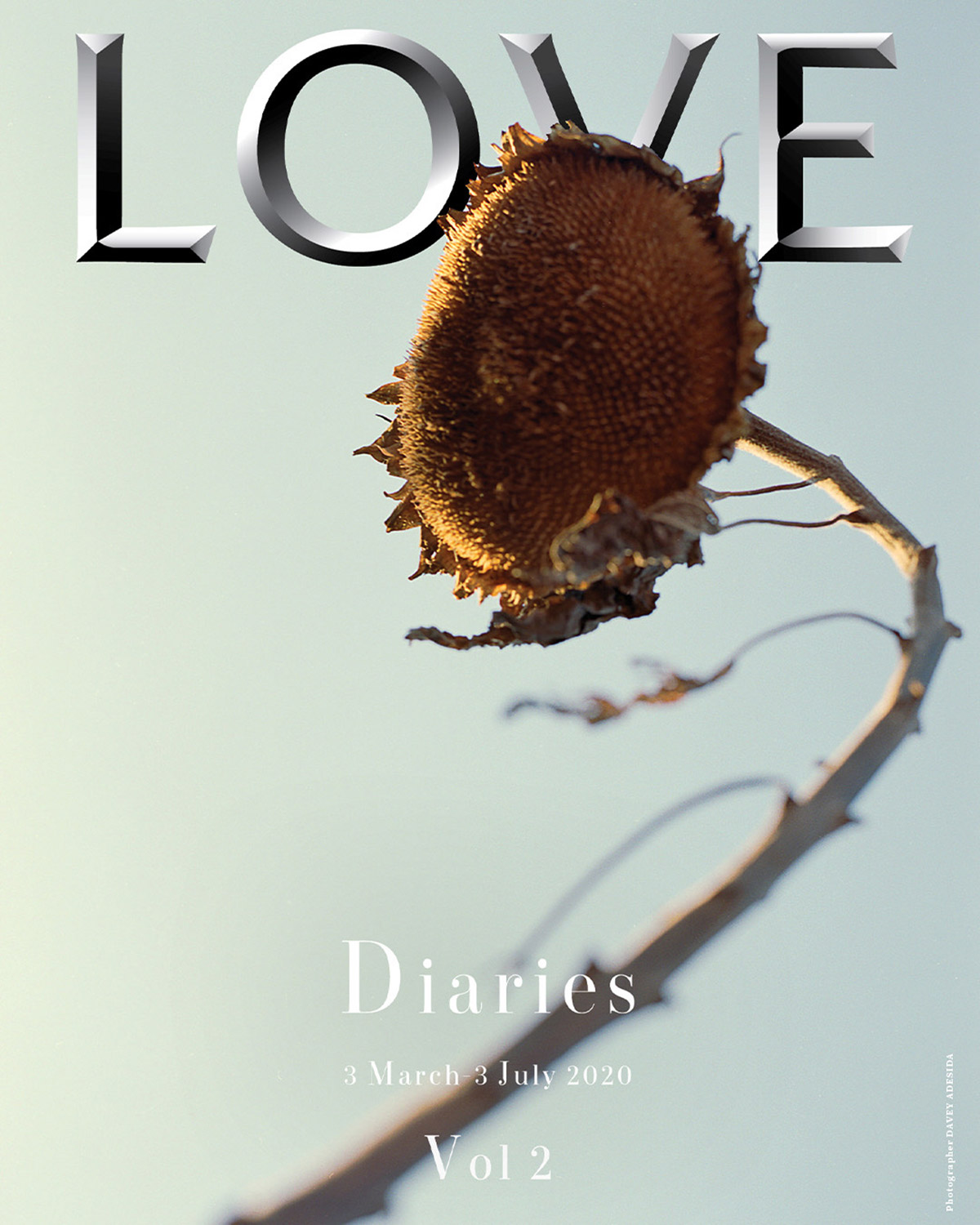
Pierre: I think that’s what really what transpires from the issue when you look at them. You know it’s a labor of love and it’s taken a lot of energy and emotion to put together.
Katie Grand: I just like working with young people. I find it really inspiring and it’s important to give them that support. I think it just comes down to wanting to be surrounded by talented people. Any support that you can give to a talent or someone that’s starring in your show or your video or whatever the medium, is important.
Pierre: Do you think the industry is becoming too big or is too big? Not in terms of the people working in it, but just as a whole. As an entity.
Katie Grand: I have to say, I absolutely loved how tiny our team was this issue but all the parameters were different. That was an amazing moment to be able to document. That moment’s already gone but I don’t think it can go back to being a hundred people on set. I think we’re in a very, very weird limbo right now. I think, in a strange way, it’s more of a limbo than even in March because we were in a lockdown then, whereas right now, we’re in this kind of weird time, this economic disaster. People are trying to get back to normal, but normal doesn’t exist anymore. How are people going to do it? So, I think this patch of time, September to Christmas, maybe through to February, is going to be far more challenging than the other half of the year. It felt like the fashion industry was waiting for September and then it would make some decisions but, you know, that’s gone. Countries are getting closed weekly. I think definitely in America, we’re waiting for the election to see what’s going to happen. I think it’s much more a state of limbo than it was.
Pierre: I think we’re going to be shaken again emotionally. Obviously, financially. And then, how do you apprehend that in terms of having another issue out? Of maybe reliving what we’ve just lived from March to July?
Katie Grand: Normally, I would be in New York now working with Marc or about to leave any day. And, I’m not off to New York and we’re not in the middle of pre-casting and I’m not texting with him fifty times a day talking about colors of fabric, all the usual things have just gone. This is my first experience with this kind of Fashion Week and exploring my relationships with designers and how we’re going to muddle through. I think I’m probably going to have to take a minute to just process this. Because normally, it would happen around the 10th of October and we’re still six weeks away from that. On a personal level, I just need to kind of process that. I haven’t got a clue right now of what the next six weeks will look like.
Pierre: Not yet. It’s still weird times.
Katie Grand: You know, I just have to say, I’m so grateful for you and your enthusiasm and how you get on with things and how you think things through. It’s been such a special time working with you. Like, it couldn’t have happened more perfectly, in a way. I’m just really grateful that we had an issue to make together and talk about things that matter. That was so special.
Pierre: Same! It was very special and I felt valued and respected. Thank you so much! We have six weeks until we start on the next one. And, I’m super happy and glad to be part of the team.
You May Also Like: Actor and Activist Ilfenesh Hadera on The Importance of Vibrant Diversity in Culture and Community
